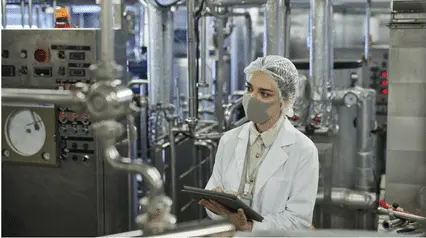What Does TIMWOOD Mean?
TIMWOOD is a framework for identifying wastes in the workplace that can be applied to any organization or industry. Developed by the Lean manufacturing experts at Toyota, TIMWOOD is an acronym for the seven (7) wastes found in manufacturing: Transportation, Inventory, Motion, Waiting, Overproduction, Overprocessing, and Defects. It helps organizations dramatically improve the efficiency of their workplace by defining and reducing waste.
These wastes can negatively impact productivity and increase costs. Recognizing and addressing these wastes is essential to running an efficient and profitable business.
Who Identified the 7 Wastes?
Taiichi Ohno, the father of the Toyota Production System (TPS), was the person who identified the seven wastes, also known as TIMWOOD. He categorized these unproductive manufacturing practices to remove them from work processes.
Due to his discovery, TIMWOOD now plays an integral part in the TPS to determine and eliminate these seven wastes, resulting in high efficiency in production.
Why is Identifying TIMWOOD Essential?
If you’re looking for a way to reduce the amount of waste your workplace produces, it is essential to identify TIMWOOD to be able to remove these kinds of waste.
By taking a close look at the seven types of waste, you can begin to identify areas where your company could improve. Always remember: small changes can make a big difference!
What are the 7 Wastes?
TIMWOOD is an acronym for the seven wastes in a manufacturing process. Each letter of this acronym corresponds to one of the seven wastes. Let’s take a closer look at each one:
Transportation
Transportation is the wasted effort of moving materials or products that are not being worked on. In a manufacturing setting, this might refer to the unnecessary movement of components from one point to another.
Keep in mind that materials and goods moved unnecessarily result in wasted time and money.
Inventory
Inventory refers to any materials or products that are not being used and are just taking up space. This might include raw materials, finished goods, or even work-in-progress.
Excess materials and goods take up space and money and can lead to confusion and mistakes.
Motion
Motion is the wasted effort of workers moving around unnecessarily, such as reaching, bending, stretching, walking, and lifting. This might be due to an inefficient layout of the workplace or poorly designed tools and equipment.
Repetitive movements are also included in this type of waste as they do not serve any value to the customers or work productivity.
Waiting
Waiting is the time spent waiting for materials, information, or approvals. This can lead to delays in the production process and result in decreased productivity.
For example, employees wait for materials or instructions that never come, or they wait in line for machines that are not available.
Overproduction
Overproduction is the production of more than what is needed, either in terms of quantity or quality. This can lead to excess inventory and waste both time and resources.
Producing more than is needed creates waste in the form of extra space in inventory and increased transportation needs.
Over-processing
Over-processing refers to unnecessarily adding steps or components to a product or service than what is needed by the customer.
Some examples include:
- using higher precision equipment when not necessary;
- running more analysis than needed;
- creating more reports than what is required;
- adding more steps to the purchasing process;
- adjusting a component after it has already been installed; or
- having more functionalities in a product than needed.
Defects
Defects happen when the product is unusable by the customers. Products that are not up to standard create waste in terms of time, materials, and money spent on reworking or discarding them.
What is “Waste” in Lean Manufacturing?
Waste in lean manufacturing is defined as any kind of action or process that doesn’t provide value to the customer.
More importantly, waste in a manufacturing process is any unwanted step or process that doesn’t benefit the customer, resulting in them not paying for the product.
What are the 8 wastes of Lean Production?
The eight wastes of Lean production are precisely the same as TIMWOOD. The only difference is the additional eighth waste known as the non-utilized talent or skill.
Non-utilized talent is the wasted human potential, whether it be skillset, experience, or knowledge.
Create Your Own 8 Wastes Checklist
Eliminate manual tasks and streamline your operations.
Get started for FREE


